 by "ttyymmnn" (ttyymmnn)
by "ttyymmnn" (ttyymmnn)
Published 11/29/2017 at 12:35
 by "ttyymmnn" (ttyymmnn)
by "ttyymmnn" (ttyymmnn)
Published 11/29/2017 at 12:35
Tags: wingspan
; Planelopnik
STARS: 7
With a name inspired by its smaller Flying Fortress predecessor , the B-29 Superfortress was a true behemoth of the skies and represented the zenith of the piston engine era and the pinnacle of aircraft design for its time. But the Superfortress was not only a devastatingly effective bomber. It also served as the basis for a host of variants, both military and civilian.
!!! UNKNOWN CONTENT TYPE !!!
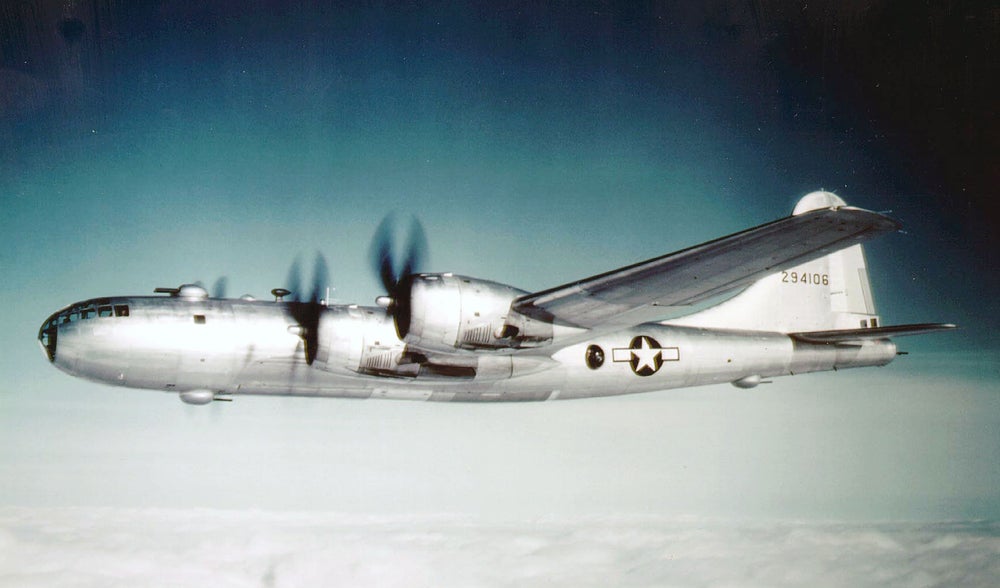
!!! UNKNOWN CONTENT TYPE !!!
Boeing had been working on a pressurized bomber all the way back in 1938, and when the US Army Air Forces made a request for a so-called ďsuper bomberĒin 1939, Boeing was well on their way. The B-29 was one of the largest aircraft of the war, with a length of 99 feet, a wingspan of 141 feet, and an empty weight of 74,500 pounds. Its Wright R-3350 Duplex Cyclone 18-cylinder radial engines, with two superchargers each, produced 2,430 horsepower each and could carry the Superfortress to nearly 32,000 feet and a maximum speed of 357 mph. Without refueling, the B-29 had a range of 3,250 miles and its bomb bay housed up to 20,000 pounds of ordnance. The B-29's innovative computerized fire control system allowed one gunner to focus the firepower of four remote controlled turrets, and the tail gun, on a single target, bringing withering fire from up to ten .50 caliber machine guns.
Though initially intended to be flown against Nazi Germany in Europe, delays in production meant that the Superfortress was used exclusively in the Pacific Theater. It began by flying long missions from China over the Himalayas to attack Japan, then flew from bases on islands in the Pacific as America and her allies relentlessly moved closer to the Japanese homeland. From these islands, both conventional strategic bombing missions and low level fire raids were carried out against Tokyo and other Japanese cities. Then, on August 6 and 9, 1945, specially modified
Silverplate
B-29s
dropped an atomic bomb
on Hiroshima and Nagasaki which hastened the end of the War.
But the end of WWII did not mean the end of service for the B-29. From 1950-1953, Superfortresses carried out bombing missions over Korea, and performed the final daylight strategic bombing missions of that war. The B-29 was finally retired in 1960 after 16 years of service.
!!! UNKNOWN CONTENT TYPE !!!
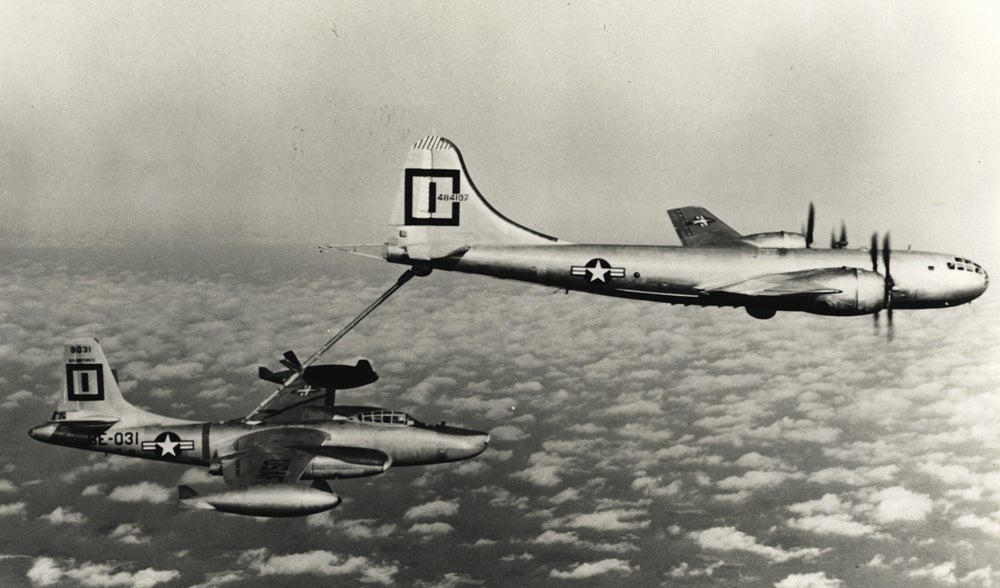
!!! UNKNOWN CONTENT TYPE !!!
Following the end of WWII, the Air Force needed a way to extend the range of its bomber fleet, and this meant aerial refueling. The B-29, already possessing long range, was the perfect aircraft to take on the role of flying gas station. At first, the KB-29M was developed to pass gas to a specially modified receiver B-29 via a hose looped between the aircraft. While effective, this proved cumbersome, so Boeing developed a probe and drogue system that could refuel not only bombers but smaller fighter aircraft as well. But the real breakthrough came with the KB-29P, which introduced the flying boom, allowing the receiving aircraft to hold station behind and below the tanker while the boom operator ďflewĒ the boom into the receiver of the waiting aircraft. Up to 12,000 gallons of fuel could be passed between aircraft in this way. The first KB-29 entered service in 1948, and was later superseded by the more powerful KB-50. The KB-29M was used to fuel the B-50 Lucky Lady II during the worldís first nonstop circumnavigation of the globe in 1949.
!!! UNKNOWN CONTENT TYPE !!!

!!! UNKNOWN CONTENT TYPE !!!
Though the original B-29 was a successful aircraft, it was plagued throughout its service life by problems with its Wright Cyclone engines that were never fully resolved. To address these shortcomings, and to provide more power in general, work began in 1944 to fit the Superfortress with the massive Pratt & Whitney R-4360 Wasp Major , a four-row 28-cylinder monster that produced 3,500 horsepower and gave the B-50 a top speed of 394 mph. The Wasp Major was the highest displacement aircraft engine ever to be mass produced in the United States, and the last of the Wasp family. Initially known as the B-29D, the B-50 was also given a larger vertical stabilizer, along with other aerodynamic and structural improvements, including underwing fuel tanks. The B-50 was introduced in 1948, and was the final piston-powered bomber to serve in the US Air Force. The bomber version played the role of nuclear deterrent, while the reconnaissance version, the RB-50, was used to probe the northern reaches of the Soviet Union before the arrival of the MiG-15 made that mission too dangerous. When the B-50s were replaced by jet bombers in the mid-1950s, many were converted to KB-50 tankers.
!!! UNKNOWN CONTENT TYPE !!!
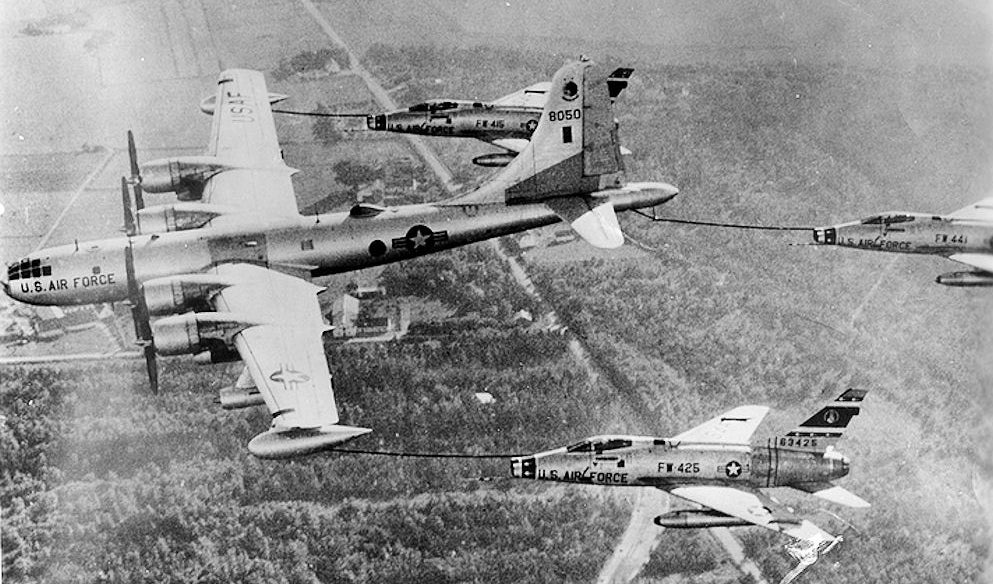
!!! UNKNOWN CONTENT TYPE !!!
The idea of converting a bomber to a tanker had already shown merit with the KB-29, and the more powerful engines of the B-50 made it a ready candidate to take on the job of refueling early jet fighters and jet bombers. The KB-50 entered service with SAC in 1956, but despite its higher speed, it still had trouble keeping up with the faster jets. To solve this deficiency, a J47 turbojet was mounted in a pod under each wing which increased the top speed to 444 mph and allowed the newly christened KB-50J to refuel at higher altitudes. Crews developed a technique known as ďtobogganing,Ē where the tanker entered a shallow dive after hookup to the receiver jets to further increase speed. The jet engines also shortened the takeoff distance and allowed the tankers to reach the thirsty fighters in less time. Though retirement started in 1954, some flew all the way into the early part of the Vietnam War.
!!! UNKNOWN CONTENT TYPE !!!
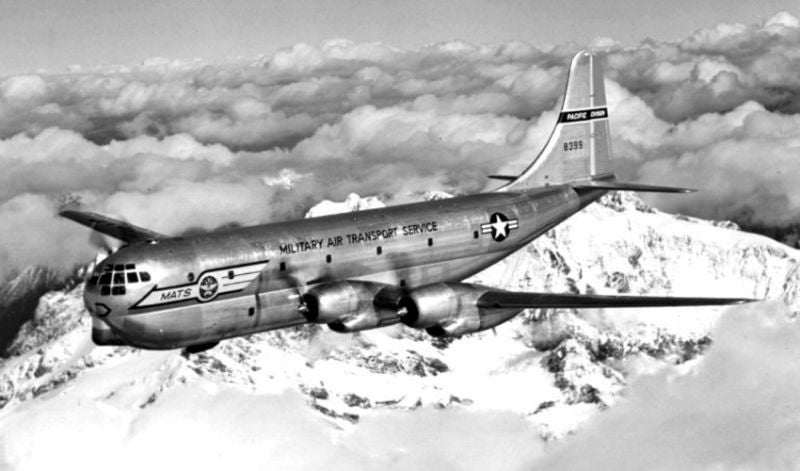
!!! UNKNOWN CONTENT TYPE !!!
An army is nothing without logistics, and as the Cold War demands of the US Army grew, larger cargo aircraft were required to meet them. Beginning with the lower fuselage, wings, engines and tail from the B-29, Boeing added a larger bubble on top to proved more room for cargo or troops. Starting with the 10th production model of the C-97, the larger tail of the B-50 was used, and the original R-3350 engines of the B-29 were replaced by the more powerful Wasp Majors found on the B-50. The C-97 could carry 35,000 pounds of cargo at a range of nearly 5,000 miles, and was the first mass-produced transport aircraft to include cabin pressurization. A single C-97 took part in the Berlin Airlift before a landing accident put it out of action, and C-97s were used to evacuate casualties during the Korean War. The C-97 was finally retired in 1978.
!!! UNKNOWN CONTENT TYPE !!!
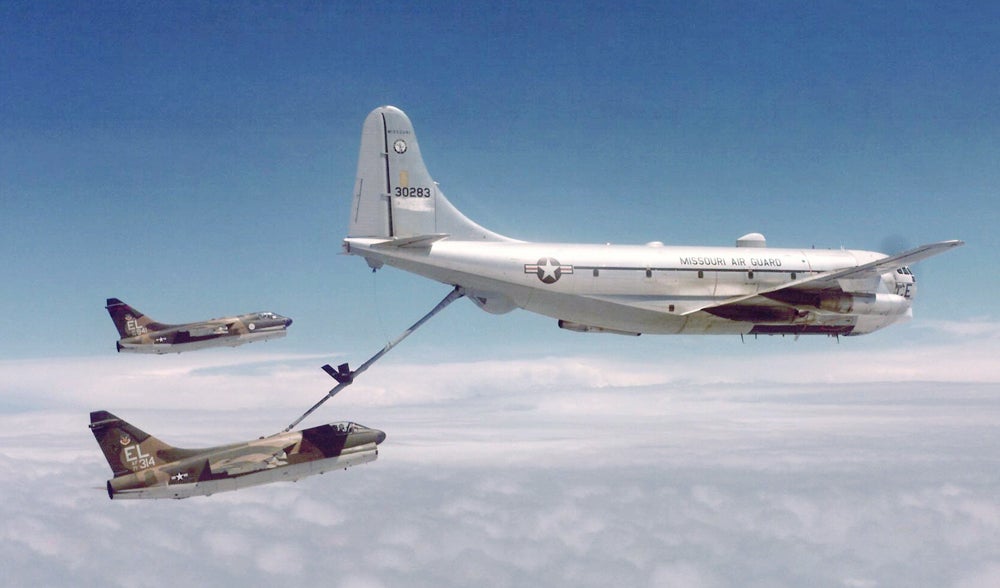
!!! UNKNOWN CONTENT TYPE !!!
Again, like its forebears, the C-97 proved to be an excellent platform for conversion into an aerial tanker, with the pressurized lower section of the fuselage reserved for 9,000 gallons of jet fuel while the pressurized cabin carried supplies or personnel. Pressurization allowed refueling missions to be carried out at high altitude. The KC-97 was fitted with the flying boom for refueling, as well as a pair of turbojet engines to increase its speed. The KC-97 entered service in 1951, and a total of 811 were built before its retirement in 1978. Even with the addition of J47 turbojets, the KC-97 was still not quite fast enough to keep jet refueling from being a stressful and difficult process. It wasnít until the arrival of the jet-powered KC-135 Stratotanker that the tanker could really keep up with its customers.
!!! UNKNOWN CONTENT TYPE !!!
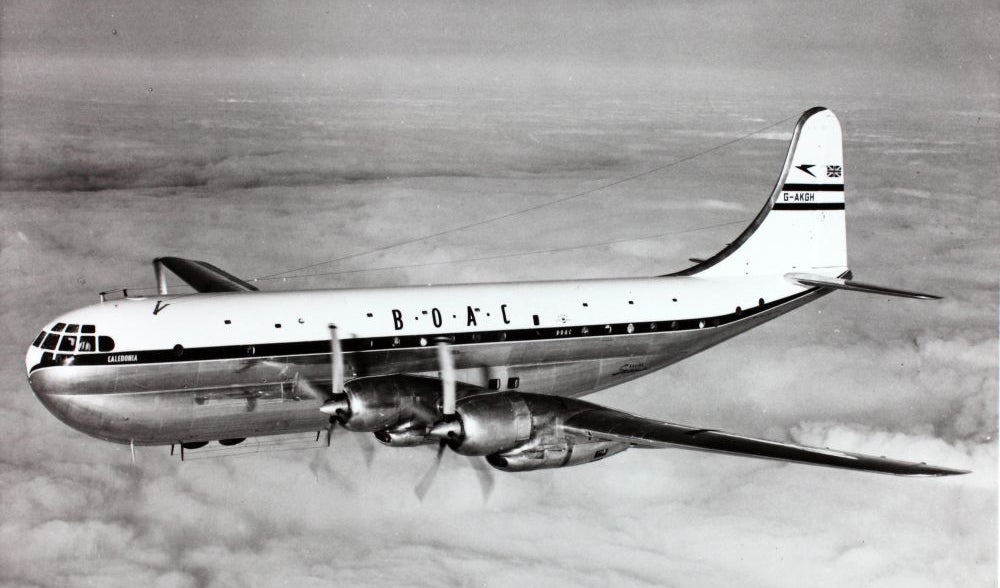
!!! UNKNOWN CONTENT TYPE !!!
With the development of the pressurized C-97, it only made sense for Boeing to convert it into a commercial airliner. The double-bubble construction accommodated as many as 100 passengers on the upper deck, with an additional 14 seated on the lower deck. Typically, though, about 70 seated passengers were carried, or 28 in sleeping berths. Pan American was the launch customer, and they initiated service from San Francisco to Honolulu in 1949. By 1954, the Stratocruser had carried 3.2 million passengers on nearly 28,000 transatlantic flights and 3,600 transcontinental trips covering a total of 169,859,579 miles. Unfortunately, the same engine problems that plagued the B-29 also beset the 377, and only 55 were built before the type was retired in 1963.
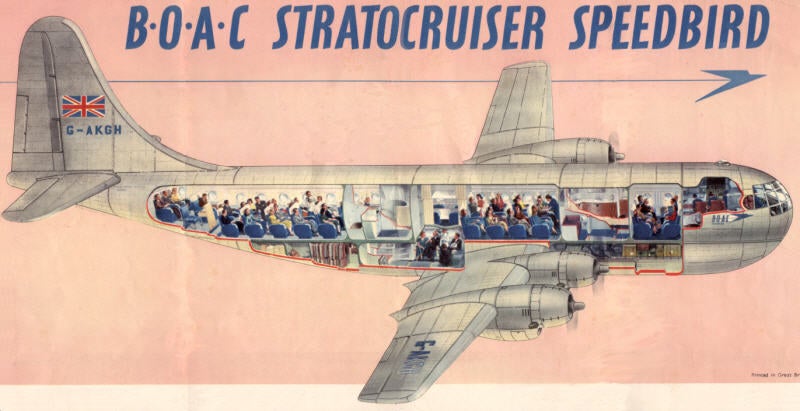
!!! UNKNOWN CONTENT TYPE !!!
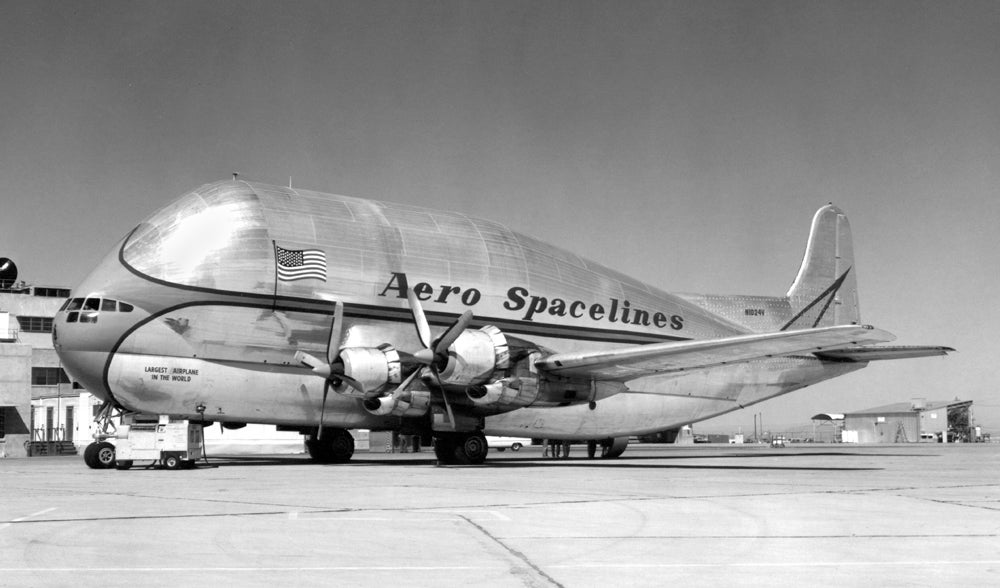
!!! UNKNOWN CONTENT TYPE !!!
The B-29 had one final evolution to make, and that was into the Guppy series of oversized cargo aircraft. Three different versions of the oversized cargo transporter were built from scavenged C-97s and 377s: the Pregnant Guppy, Super Guppy, and Mini Guppy. Originally powered by the same engines as their predecessors, later models saw the transition to turboprop power. Much of the work done by the Guppies was for NASA, transporting rocket sections for the Gemini and Apollo programs. After Apollo, the Guppies transported aircraft sections for NASA, and was also flown by Airbus, who used them to carry aircraft sections for final assembly. While the Mini Guppy and Pregnant Guppy have been retired, the Super Guppy continues to be flown by NASA.

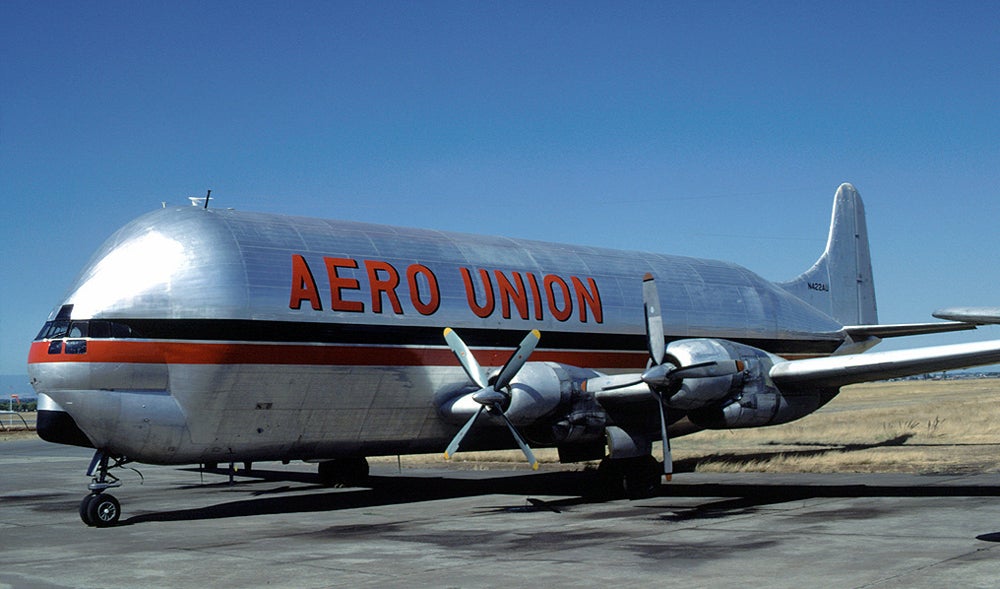
!!! UNKNOWN CONTENT TYPE !!!
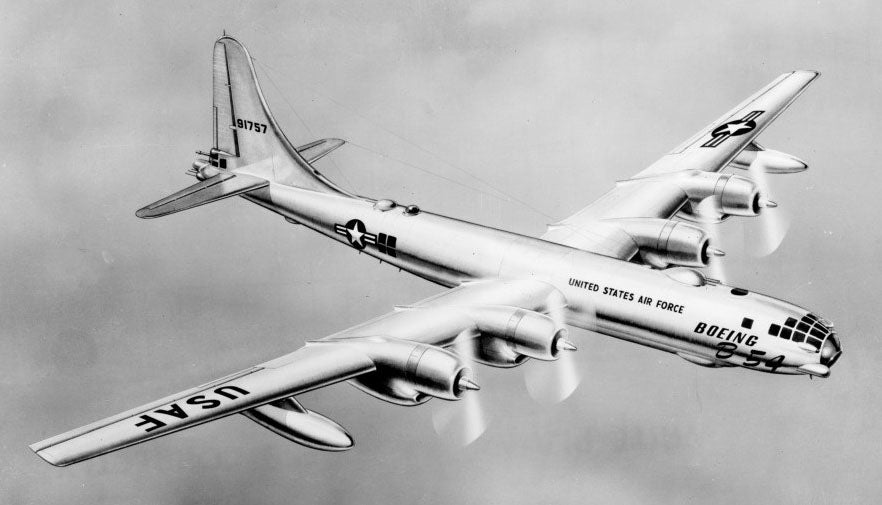
!!! UNKNOWN CONTENT TYPE !!!
Boeing built many other variants to the original B-29, some of which were one-off variants to improve performance or add features, and there are too many to list in this space (a list of all variants can be found here ). But there was one ultimate Superfortress that the Air Force considered but never built. The B-54, which would have been known as the Ultrafortress, was developed from the B-50 and had a fuselage that was 10-feet longer with a wingspan increased by 20 feet. The wings were so long that outrigger landing gear were added to the outer engine nacelles. The B-54 was slated to receive the ultimate Wasp Major engine, the R-4360-51 Variable Discharge Turbine (VDT). These fuel-injected 28-cylinder engines would have used engine exhaust to drive a turbine to provide an expected 800 additional horsepower for a total of 4,500 horsepower each. Large external tanks provided extra fuel, and protection came from 14 .50 caliber machine guns. Bomb load would have been 36,000 pounds, compared to 20,000 pounds in the original B-29. Though the Air Force placed an order for 21 B-54A bombers and 52 RB-54A reconnaissance aircraft, problems with the engine development and the arrival of effective jet bombers rendered the project obsolete, and it was canceled in 1949 with only an incomplete mockup being built.
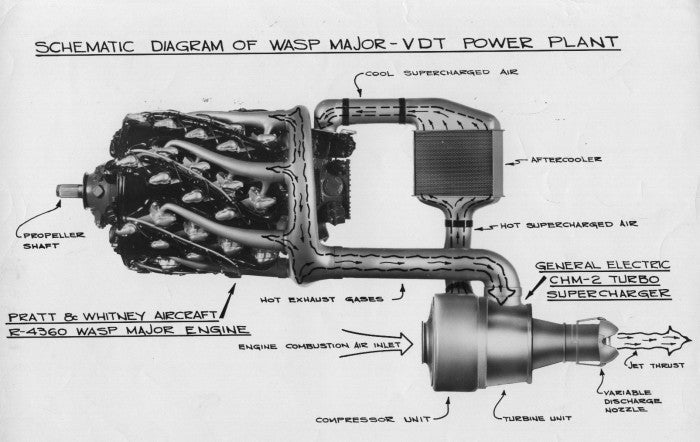
!!! UNKNOWN CONTENT TYPE !!!
!!! UNKNOWN CONTENT TYPE !!!
!!! UNKNOWN CONTENT TYPE !!!
!!! UNKNOWN CONTENT TYPE !!!
!!! UNKNOWN CONTENT TYPE !!!
!!! UNKNOWN CONTENT TYPE !!!
!!! UNKNOWN CONTENT TYPE !!!
If you enjoyed this post, please join in the conversation and let me know. For more posts about aviation history and aircraft oddities, set a course for † Wingspan .
!!! UNKNOWN CONTENT TYPE !!!
 "Demon-Xanth knows how to operate a street." (demon-xanth)
"Demon-Xanth knows how to operate a street." (demon-xanth)
11/29/2017 at 12:43, STARS: 4
Whatís crazy, this plane has 23,000LBs of ordinance capacity:

 "ttyymmnn" (ttyymmnn)
"ttyymmnn" (ttyymmnn)
11/29/2017 at 12:54, STARS: 0
I was amazed the first time I heard that an F-4 carried more than a B-17. The B-17 isnít really as big as it seems, though,
 "Rusty Vandura - www.tinyurl.com/keepoppo" (rustyvandura)
"Rusty Vandura - www.tinyurl.com/keepoppo" (rustyvandura)
11/29/2017 at 13:00, STARS: 0
Great write-up on a great aeroplane. Did the B-29 shoot down any fighters?
 "facw" (facw)
"facw" (facw)
11/29/2017 at 13:01, STARS: 1
I really like this picture of a KC-97 refueling A-10s. Very era-spanning (and Iím sure the tanker appreciated refueling slow planes for a change):
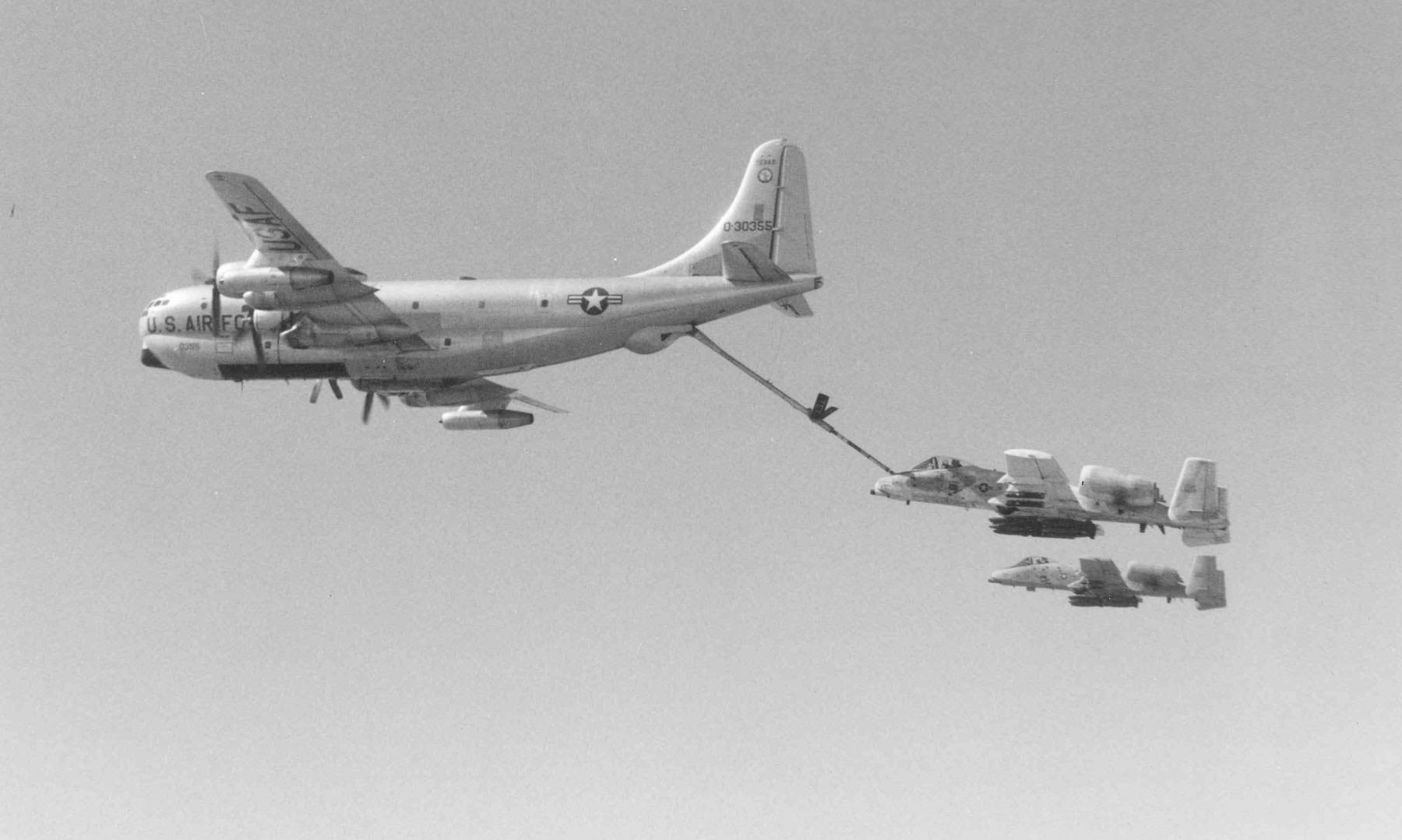
Also this one of a B-52 clearly trying to go as slowly as possible to stay with a non-jet-equipped KC-97:
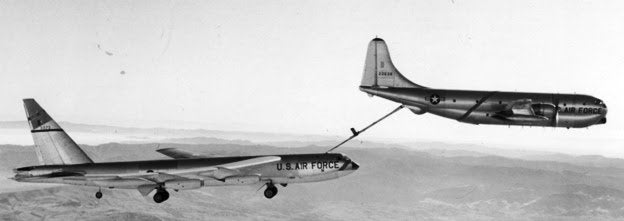
 "ttyymmnn" (ttyymmnn)
"ttyymmnn" (ttyymmnn)
11/29/2017 at 13:04, STARS: 1
Thatís a neat picture, and yes, slow planes, but note the AOA on those Thunderbolts. Still going pretty slow, even with the jets on the tanker.
That looks like an A model Buff, with the tall pointy tail. Iím sure they were glad when the KC-135 came online!
 "ttyymmnn" (ttyymmnn)
"ttyymmnn" (ttyymmnn)
11/29/2017 at 13:08, STARS: 0
Thanks. Iím sure they did, but I canít find any figures quickly. I can tell you, though, that by the end of the war the USAAF had removed the defensive turrets from the B-29s to save weight and carry more ordnance.
 "Demon-Xanth knows how to operate a street." (demon-xanth)
"Demon-Xanth knows how to operate a street." (demon-xanth)
11/29/2017 at 13:08, STARS: 2
Modern fighters are also huge:
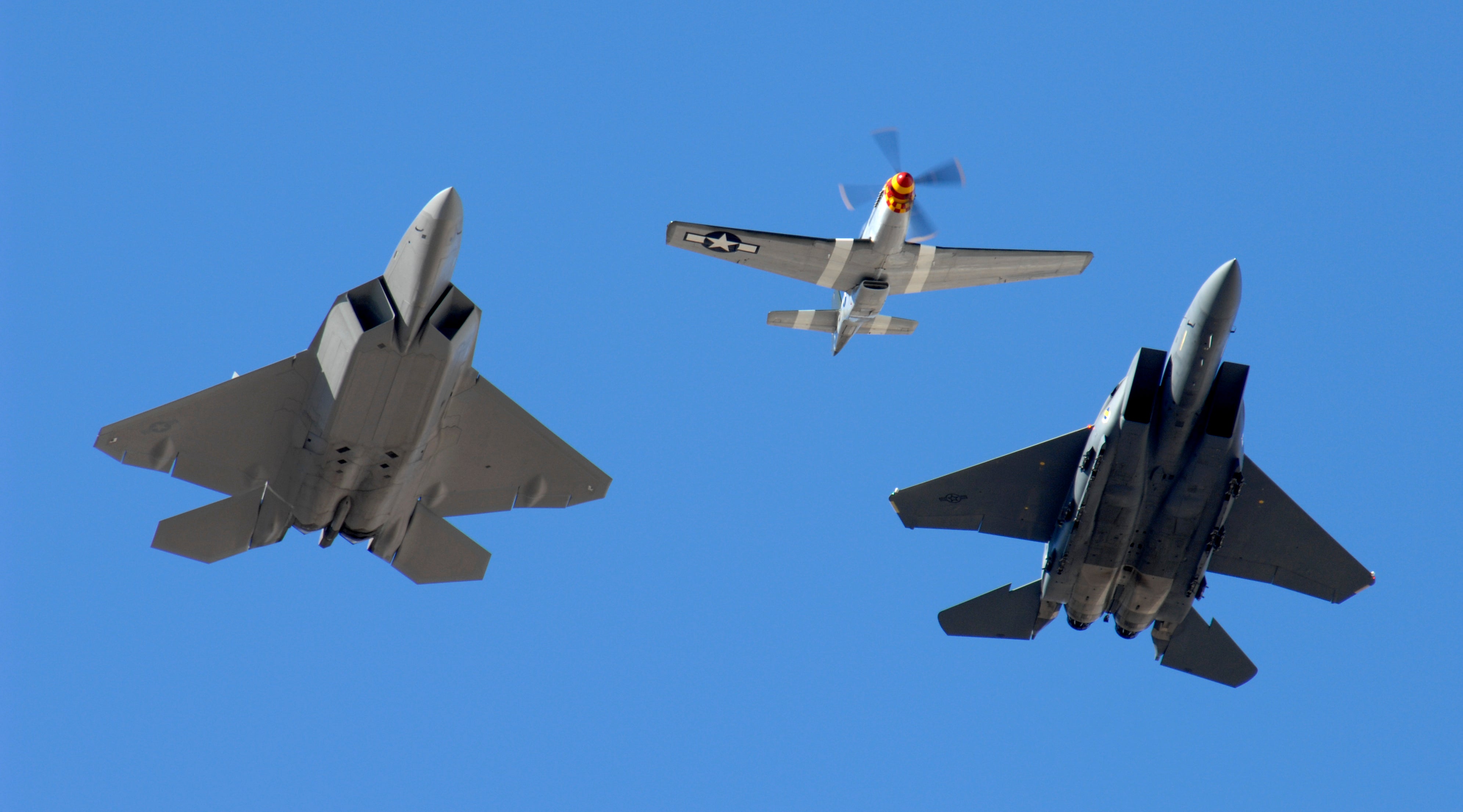
 "ttyymmnn" (ttyymmnn)
"ttyymmnn" (ttyymmnn)
11/29/2017 at 13:09, STARS: 0
Indeed.
 "Demon-Xanth knows how to operate a street." (demon-xanth)
"Demon-Xanth knows how to operate a street." (demon-xanth)
11/29/2017 at 13:11, STARS: 0
Sometimes I wonder how effective they would be if a carrier lost their wheels, so they strapped a few planes to the back of the deck and tried to push their way into port.
 "Rusty Vandura - www.tinyurl.com/keepoppo" (rustyvandura)
"Rusty Vandura - www.tinyurl.com/keepoppo" (rustyvandura)
11/29/2017 at 13:16, STARS: 0
Hadnít they also largely removed the enemy air interceptors?
 "ttyymmnn" (ttyymmnn)
"ttyymmnn" (ttyymmnn)
11/29/2017 at 13:18, STARS: 0
Iím no engineer, but I would bet that it would be ineffective. A Nimitz -class carrier weighs 90,000 tons . Thatís 180 million pounds. If a Super Hornet puts out 13,000 pounds of thrust (assuming itís all relative), that means it would take more than 13,000 Super Hornets to get it moving. Like I said, Iím no engineer or mathematician, so I could be incredibly naive about how all this works. Maybe somebody who really knows about these things could chime in.
 "ttyymmnn" (ttyymmnn)
"ttyymmnn" (ttyymmnn)
11/29/2017 at 13:19, STARS: 0
By that time, there wasnít much of a Japanese air force left, and during high altitude missions, the Japanese fighters had trouble reaching the bombers. That all changed in Korea with the arrival of the MiG-15. The Superfort was hastily recalled.
 "Demon-Xanth knows how to operate a street." (demon-xanth)
"Demon-Xanth knows how to operate a street." (demon-xanth)
11/29/2017 at 13:27, STARS: 0
The key would be how much drag the water puts against the boat to figure out the top speed. Acceleration would not be brisk though. Iím thinking it might be on par with a tug.
 "ttyymmnn" (ttyymmnn)
"ttyymmnn" (ttyymmnn)
11/29/2017 at 13:29, STARS: 0
Iím thinking it wouldnít ever budge.
 "Liam Farrell" (ackrunner)
"Liam Farrell" (ackrunner)
11/29/2017 at 13:31, STARS: 0
I remember watching something about a carrier air wing, and when they repair and rebuild the jet engines they strap them to the back to test them on full afterburner. I believe they said it added an extra knot to the speed.

11/29/2017 at 14:22, STARS: 1
Yes, though the exact numbers are suspect, especially the WWII count. B-29s operating in Korea recorded 27 kills, with Command Decision , the one in the USAF Museum, bagging 5 MiG-15s.
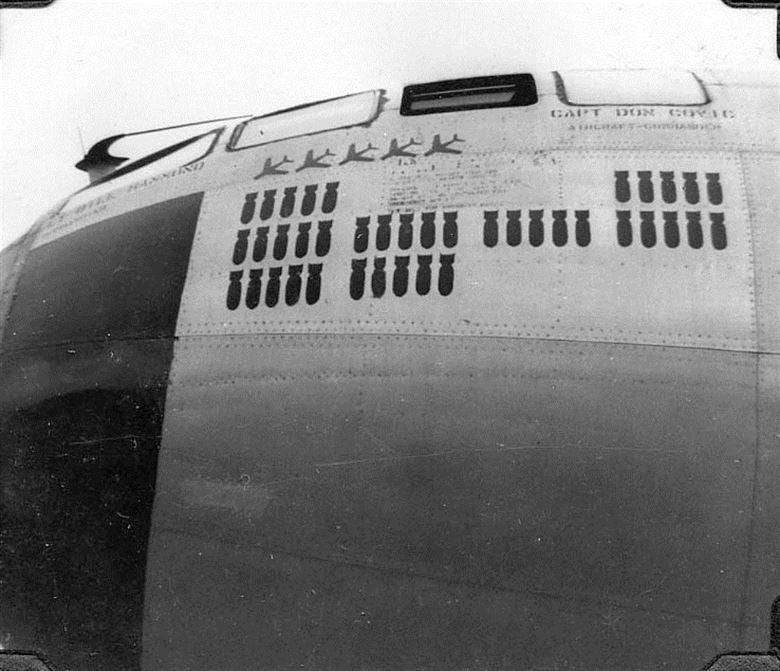

11/29/2017 at 14:32, STARS: 1
F-106s tanking from a KC-97 . I think Iíd rather get out and walk...
 "John Norris (AngryDrifter)" (angrydrifter)
"John Norris (AngryDrifter)" (angrydrifter)
11/29/2017 at 22:03, STARS: 1
B-29 Mothership
https://www.nasa.gov/centers/armstrong/multimedia/imagegallery/B-29/E58-03663A.html
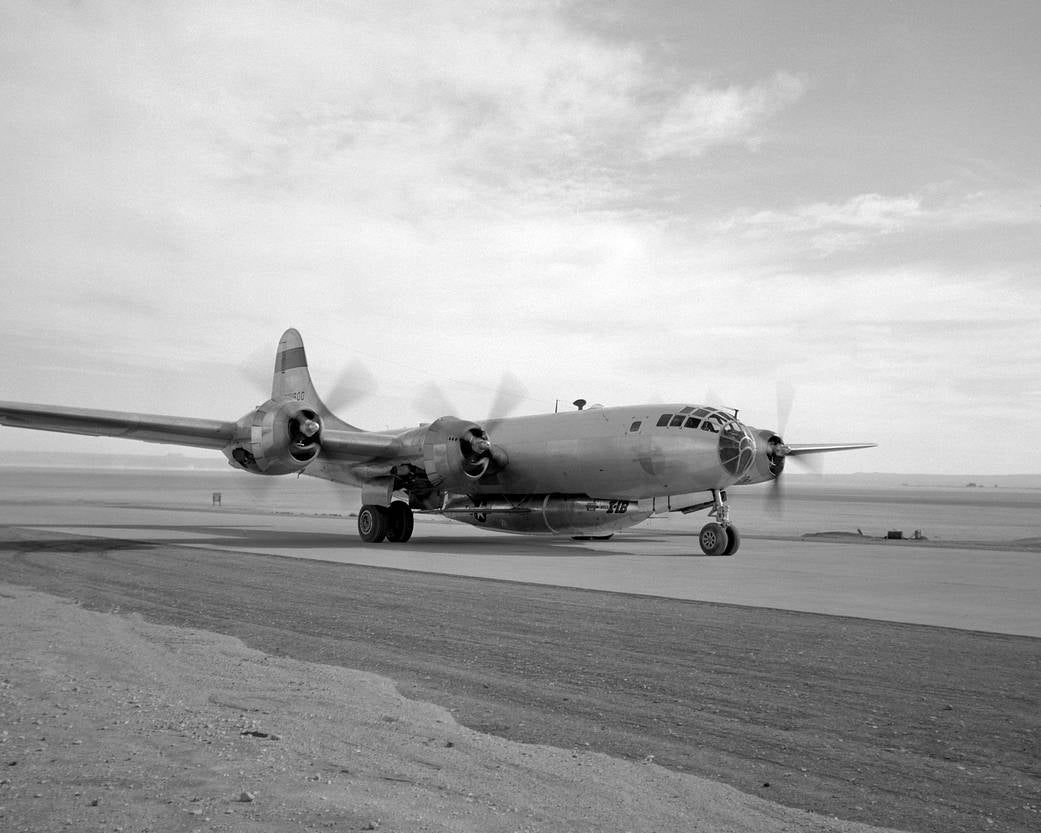
B-29 #800 with X-1B attached taxiís in off of the lakebed.
 "ttyymmnn" (ttyymmnn)
"ttyymmnn" (ttyymmnn)
11/30/2017 at 09:13, STARS: 1
How about a P2B dropping a Douglas Skyrocket?
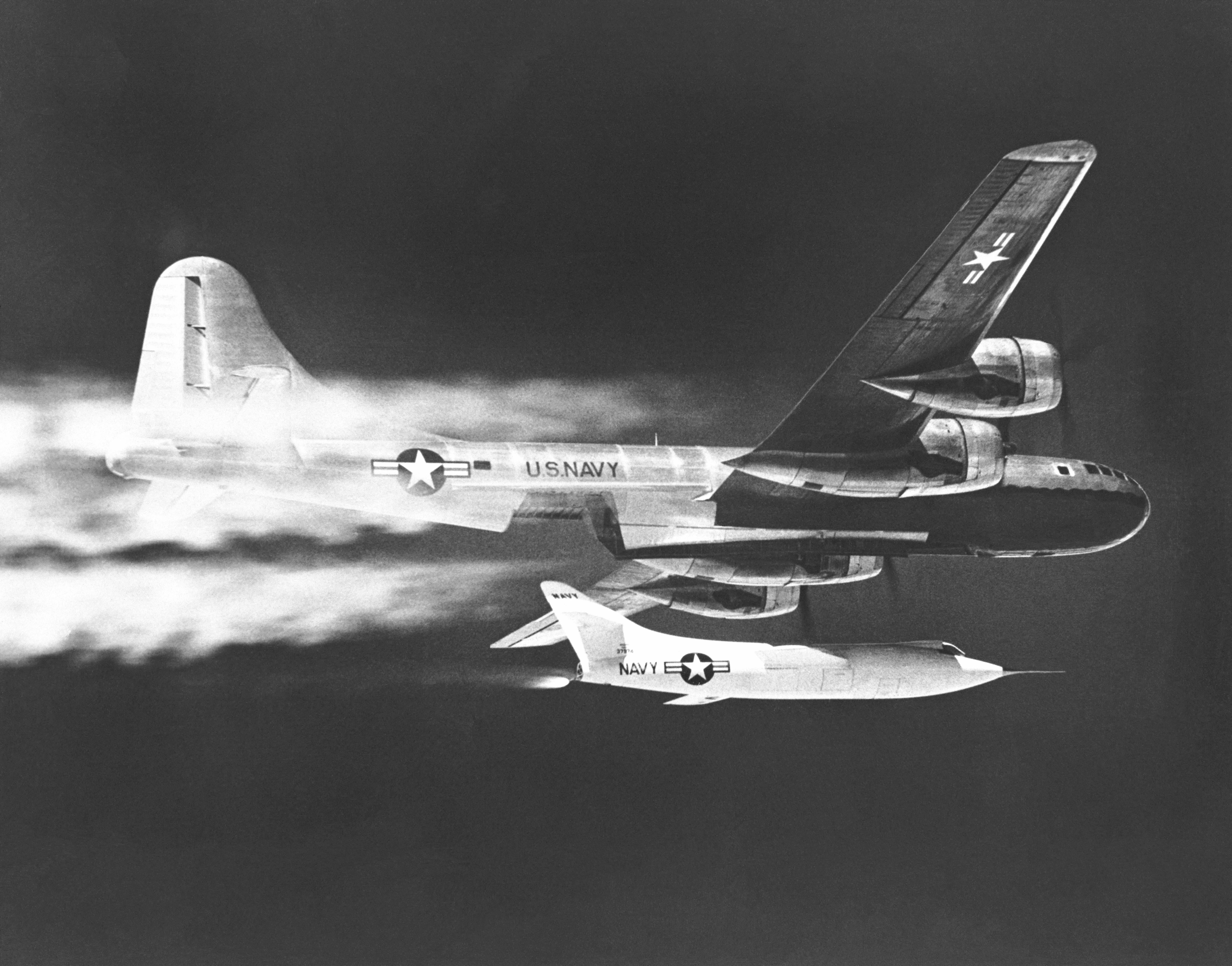
Also this:
